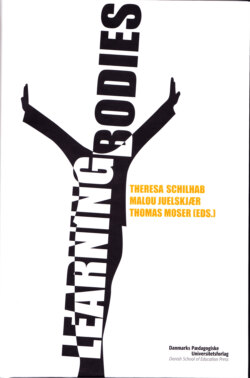Читать книгу Learning Bodies - Группа авторов - Страница 17
На сайте Литреса книга снята с продажи.
The argument from the perspective of bodily construction
ОглавлениеThe first argument has to do with bodily construction. Literally speaking, the body defines the perspective of the perceiver by restricting the outlook as to what can and what cannot be attended to. To pick a telling example: to a child, the adult world is situated above his or her head. Thus, the sphere of interesting things such as candy and matches can be kept below the child’s focus (for instance, on tables). And the child is never aware of the temptation, until he or she realizes that adults have a way of keeping things out of sight.
In the same manner, if one loses a finger, other bodily strategies will have to evolve to grasp a cup, and with new bodily strategies new interfaces develop. We take the argument from bodily construction to be congenial to the notion of “the social embodiment thesis” (Collins 2004), which states that “the language developed by a society is related to the bodily form of its members because bodily form affects the things they can do in the world.” Insofar as language is verbal behaviour, it is a token of a particular outlook in just the same way as biking.
In line with the argument from the perspective of bodily construction is the emphasis on movement as advanced by Sheets-Johnstone (1998; 1999). Moving about enforces environmental changes in organisms and perceptions thereby also change (see also Churchland 1986).
To conclude, bodily construction influences cognition in the loose sense of actually defining the outlook.
